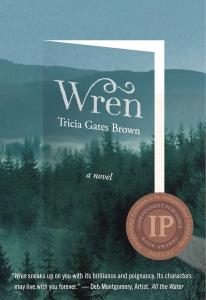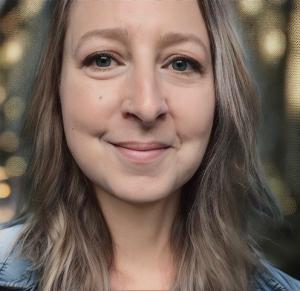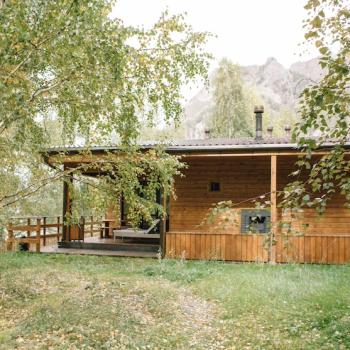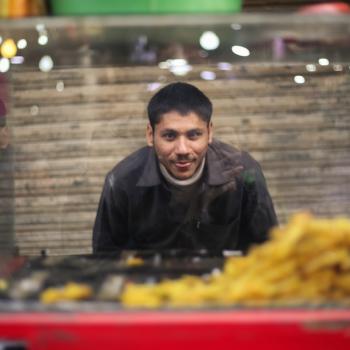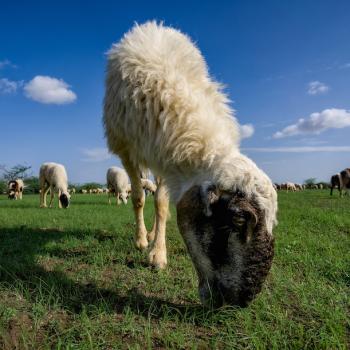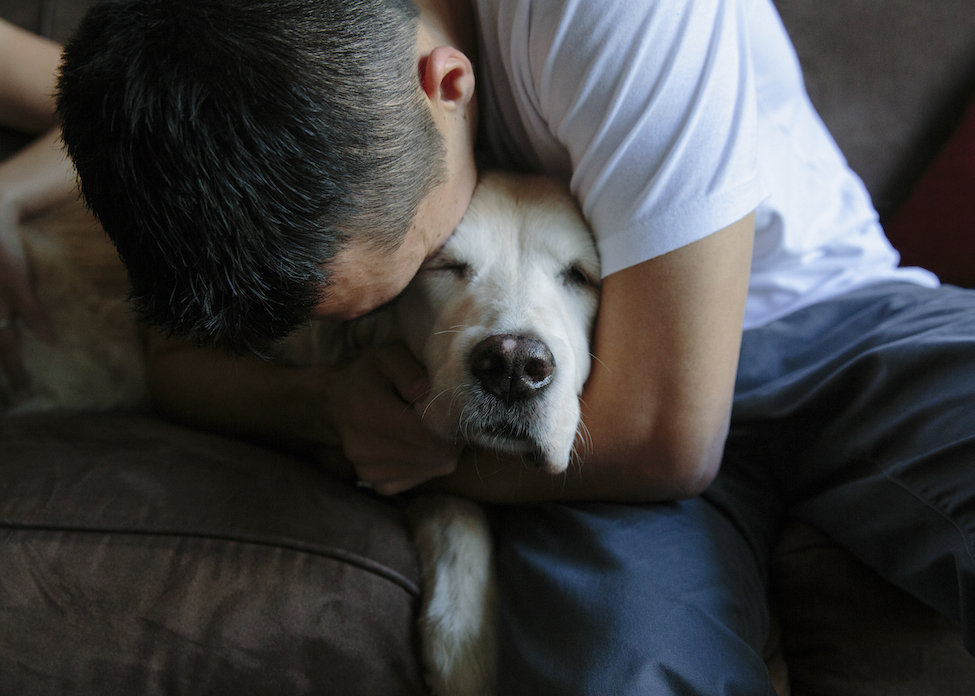
Though my daughter moved away, Sybil remains. When she’s not outside, she sleeps on the guest bed. Each day I lean over the side, kissing her and rubbing her cheeks as she purrs. She returns my love by rubbing against my ankles when she passes, stretching out to let me rub her belly, and with her ever sweet voice.
As I grow older, I’m increasingly convinced of the ways animals teach us to love. Of how they know and love God, and how the Spirit flows through them like a stream, how Spirit is so much of what they are. I believe animals have an openness to God that is rare for human beings—prone as we are to erecting barriers. God is a part of us as surely as God is a part of the animals, and is inviting us to full incarnation, perhaps the whole point of this life: allowing God to transform us into images of divinity. But animals are less handicapped by the barriers that prevent us from allowing it. My most intransigent blocks are self-doubt, over-analyzing, ego and insecurity, greed, laziness, worry. I can’t imagine these hamper wild animals to the same degree. (Domestic animals living close to humans do sometimes adopt our neurosis. I’ve known dogs to display jealously, aggression, and anxiety rivaling reality TV.)
St. Francis had a rare affinity with animals and reportedly talked with wild creatures. This is, in part, why he’s my favorite male saint. Yet people assume Francis could talk with the animals because he was gifted and saintly. I wonder, on the other hand, if Francis was saintly as a resultof his love for and relationship with animals. When we truly see animals, they teach us about the pure flow of Spirit through all beings. They teach us how to love without constantly holding back. Maybe it was animals who taught Francis the simplicity and love needed to kiss lepers, join the poor, and bless the earth.
Last week I came upon a young chipmunk while on a walk. He lay in the middle of a gravel road in the sun, in an area scattered with trees. I couldn’t see or hear other chipmunks, but I knew the area hosted cats. Sitting on the gravel a few minutes, I shaded him. As I sidled close, he didn’t move, but he shook and blinked his eyes—slowly, as if sun-fatigued. I moved closer then reached out and stroked his back. Since he didn’t mind, I moved in again and stroked him repeatedly as he stopped shaking and shifted positions. Intending to carry him out of the sun, I extended my overturned hat so he could clamber onto it, and at a nearby tree, let him run onto the bark. When I held out my hand, he nosed my fingers, and I continued to touch his tiny body while praying what to do. His left eye was sick or injured. It seemed likely he was abandoned.
When I held out my hand to scoop him up, he scampered right onto it. Then I nestled him in the upturned end of my shirt and walked the mile home with him cradled in my sweaty palm; by the time I got there, he was a tight ball of sleep. After googling chipmunk rescue, I learned he was of-age for independence in the wild: thick fur and active, as evidenced by his scurrying frantically around the pet carrier I’d placed him in. And I knew the less time he spent with me, the better.
He was beautiful. In my house of cats, he would be anything but safe and peaceful, and I assumed he would do best in the woods behind my house and neighborhood.
After walking him a half block away (and out of the cats’ hunting range), I offered him a red huckleberry, which he held in his hands, working tiny teeth to break the surface before devouring it, then another and another. I found a stump beside the huckleberry bush that was thickly coated with fresh moss and placed the chipmunk and more huckleberries on top. It was the perfect chipmunk condo, as far as I could tell. While staying close, I watched him explore the stump. Slowly I backed up and took a seat on the ground about three feet away. He ran several inches down the stump and looked at me, then jumped off, clambered over sticks and fallen leaves to reach me, before scrambling onto my sandal and up my leg.
And at this point, I was in serious trouble.
I talked to him a few minutes as he scurried over my hands and arms, and I petted him. Then I put him back on the stump and backed away—again, about three feet. This time, he didn’t explore the stump. He simply jumped off, made his way across the raucous debris, and ran up my leg.
By this point, I was really praying, seeking guidance how to care for the little guy—so tiny and vulnerable, who could barely gnaw through a huckleberry skin. I was plagued with doubts whether I’d done the right thing picking him up in the first place. As I held him in my hands, he seemed to suck on my palm like he still needed a mother. Again, I picked up the creature, who weighed less than a silver dollar, and returned him to the stump. Then I walked far enough away that he couldn’t see me.
I was in tears. He ran down the stump and around the area where I had been sitting. As I watched him skittering about, I walked away, feeling the forceps of sadness seize my heart.
Living with cats, I see dead rodents all the time—mice, shrews, voles. I usually pick the critters up by the tail, saying “poor little guy” and tossing them into the trees without a trace of real remorse. But I cried repeatedly that night as I pictured that tiny chipmunk in the woods. Why was I so broken up over this one chipmunk when I deal with dead rodents all the time? The difference, of course, is connection. That chipmunk and I formed a connection in a short time. We shared a bit of love. It makes me wonder how humans’ relationships with animals would be different if we shared loving connections with more animals—domestic and wild—far more frequently. Very different, I expect.
Wren, winner of a 2022 Independent Publishers Award Bronze Medal
Winner of the 2022 Independent Publisher Awards Bronze Medal for Regional Fiction; Finalist for the 2022 National Indie Excellence Awards. (2021) Paperback publication of Wren , a novel. “Insightful novel tackles questions of parenthood, marriage, and friendship with finesse and empathy … with striking descriptions of Oregon topography.” —Kirkus Reviews (2018) Audiobook publication of Wren.


